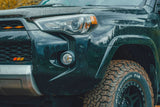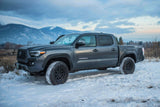Off-roading is an exhilarating adventure that allows you to explore challenging terrains and enjoy the great outdoors. However, the rough and unpredictable nature of off-road trails can pose a risk to your vehicle if you’re not careful. To ensure your off-roading experience remains enjoyable and damage-free, it’s essential to take certain precautions and follow best practices. In this blog, we’ll explore how to avoid damaging your vehicle while off-roading and provide tips to keep your ride in top condition.
1. Proper Preparation
Inspect Your Vehicle
Before heading out, conduct a thorough inspection of your vehicle. Check for any signs of wear and tear, ensure all fluids are topped off, and confirm that your tires are in good condition with adequate tread depth. Pay special attention to the suspension, brakes, and drivetrain, as these components will be under significant stress during off-roading.
Install a Lift Kit
Installing a lift kit is one of the best ways to prepare your vehicle for off-road adventures. Lift kits provide increased ground clearance, allowing you to tackle rougher terrains without worrying about damaging the undercarriage. The added height helps you navigate over rocks, through mud, and across uneven trails with greater ease and safety.
Plan Your Route
Research the trail you plan to take and understand its difficulty level. Choose a route that matches your skill level and your vehicle’s capabilities. Knowing what to expect can help you prepare adequately and avoid unexpected obstacles that could cause damage.
2. Adjust Your Driving Techniques
Drive Slowly and Steadily
One of the most effective ways to avoid damaging your vehicle is to drive slowly and steadily. High speeds can lead to loss of control and increase the risk of hitting obstacles. By maintaining a slow and consistent pace, you can navigate rough terrain more carefully and reduce the chances of damaging your vehicle.
Use the Right Gear
Engage the appropriate gear for the terrain you’re tackling. Low-range gears provide better torque and control for climbing steep hills or navigating rocky paths. High-range gears are suitable for flatter, less challenging terrain. Using the correct gear helps maintain control and prevents unnecessary strain on your vehicle.
Avoid Sudden Movements
Abrupt acceleration, braking, or steering can put excessive stress on your vehicle and lead to damage. Smooth and gradual movements are key to maintaining control and minimizing the risk of harming your vehicle. When encountering obstacles, approach them slowly and steadily to navigate safely.
3. Navigate Obstacles Carefully
Approach Angles and Ground Clearance
Understanding your vehicle’s approach, departure, and breakover angles is crucial for off-roading. These angles determine how your vehicle can navigate over obstacles without scraping or getting stuck. Increased ground clearance from a lift kit also helps in avoiding contact with the ground and potential damage.
Use Spotters
When tackling particularly challenging obstacles, having a spotter can be invaluable. A spotter can guide you through tough spots, helping you choose the best path and avoid hazards that you might not see from the driver’s seat. Their assistance can make a significant difference in preventing damage.
Choose Your Line Wisely
Selecting the right line is essential for safe off-roading. Look for the path of least resistance and avoid routes with large rocks, deep ruts, or other hazards that could damage your vehicle. Take your time to assess the terrain and choose the best route to navigate through safely.
4. Post-Trip Maintenance
Inspect for Damage
After your off-roading adventure, inspect your vehicle for any signs of damage. Look for dents, scratches, or other issues that might have occurred during the trip. Pay attention to the undercarriage and suspension components, as these areas are most susceptible to damage.
Clean Your Vehicle
Off-roading can leave your vehicle covered in mud, dirt, and debris. Cleaning your vehicle thoroughly after a trip helps prevent corrosion and allows you to spot any potential damage. Use a high-pressure hose to remove mud from hard-to-reach areas, and check for any hidden damage once the vehicle is clean.
Perform Regular Maintenance
Regular maintenance is crucial for keeping your vehicle in top condition. Change the oil, check the fluid levels, and inspect the suspension and drivetrain components. Regular maintenance ensures your vehicle is ready for the next off-roading adventure and helps prevent long-term damage.
Your Source for Quality Lift Kits
At Reaper Offroad Lifts, we provide high-quality lift kits designed to improve both off-road capabilities and ride quality. Our high-quality lift kits are designed to enhance your vehicle’s performance and durability on challenging terrains. With increased ground clearance and improved suspension capabilities, our lift kits help you navigate rough trails with confidence. Our extensive selection of lift kits and accessories ensures you can find the perfect setup for your vehicle. Explore our range of options and elevate your driving experience today at Reaper Offroad Lifts.





0 comments